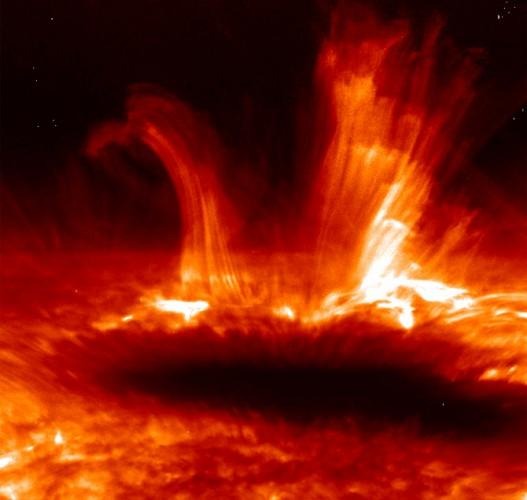NASA IRIS Satellite Sets Off On Voyage To Study Sun's Atmosphere
Earlier this month, NASA announced that they would be sending a probe into orbit later this month to study the sun's lower atmosphere. As promised, the space agency has launched the satellite into space to begin its two year mission to study the mysteries of the sun and the odd lower atmosphere that has many scientists puzzled.
The IRIS satellite launched last night at 10:27 pm ET from Vandenberg Air Force Base in California on board an Orbital Sciences Corporation Pegasus XL rocket. IRIS will observe how solar material moves and gathers energy, as well as how it heats up as it travels through the sun's lower atmosphere. This is where most of the sun's ultraviolet emission is generated, which impact Earth's climate.
IRIS was placed into a sun-synchronous polar orbit, meaning that it will orbit perpendicular to the equator. This will allow it to make nearly continuous solar observations during its two-year mission. The satellite was actually launched from a plane flying at 40,000 feet. From there, the Pegasus XL rocket launched, which sent the IRIS probe further into the sky, and finally into space.

This lower atmosphere region of the sun is rather mysterious, and it's about 3,000 to 6,000 miles thick, but what makes it interesting is that it's constantly experiencing movements of heat and energy that helps heat the upper region of the sun's atmosphere to temperatures of around 1.8 million degrees Fahrenheit. That makes it some thousand times hotter than the actual surface of the sun.
The IRIS satellite weighs around 400 pounds, and its solar panels have a wingspan of 12 feet, so it's a fairly small satellite — about the size of a car, but it'll be moving pretty quickly, with each orbit taking only around 97 minutes to complete. However, its position in orbit will give it prime location to check out the sun, as well as easily transmit information back down to Earth.
SOURCE: NASA
